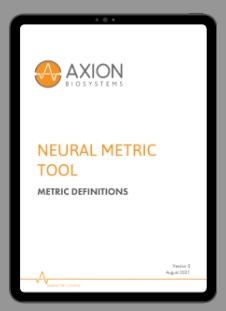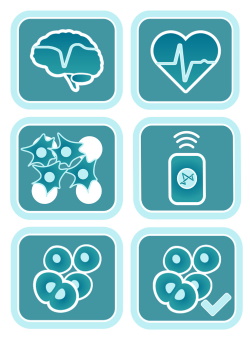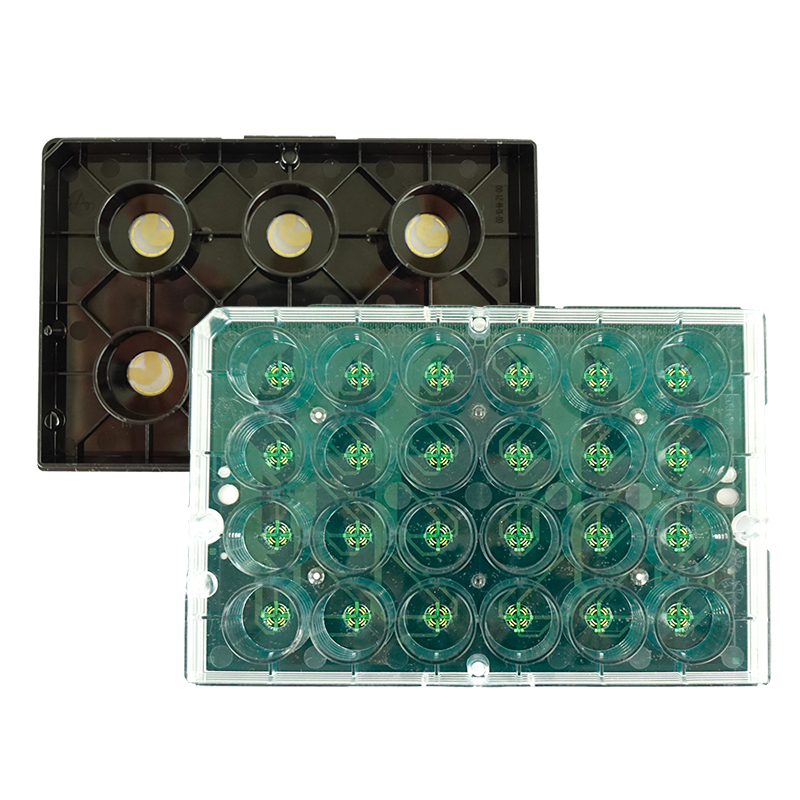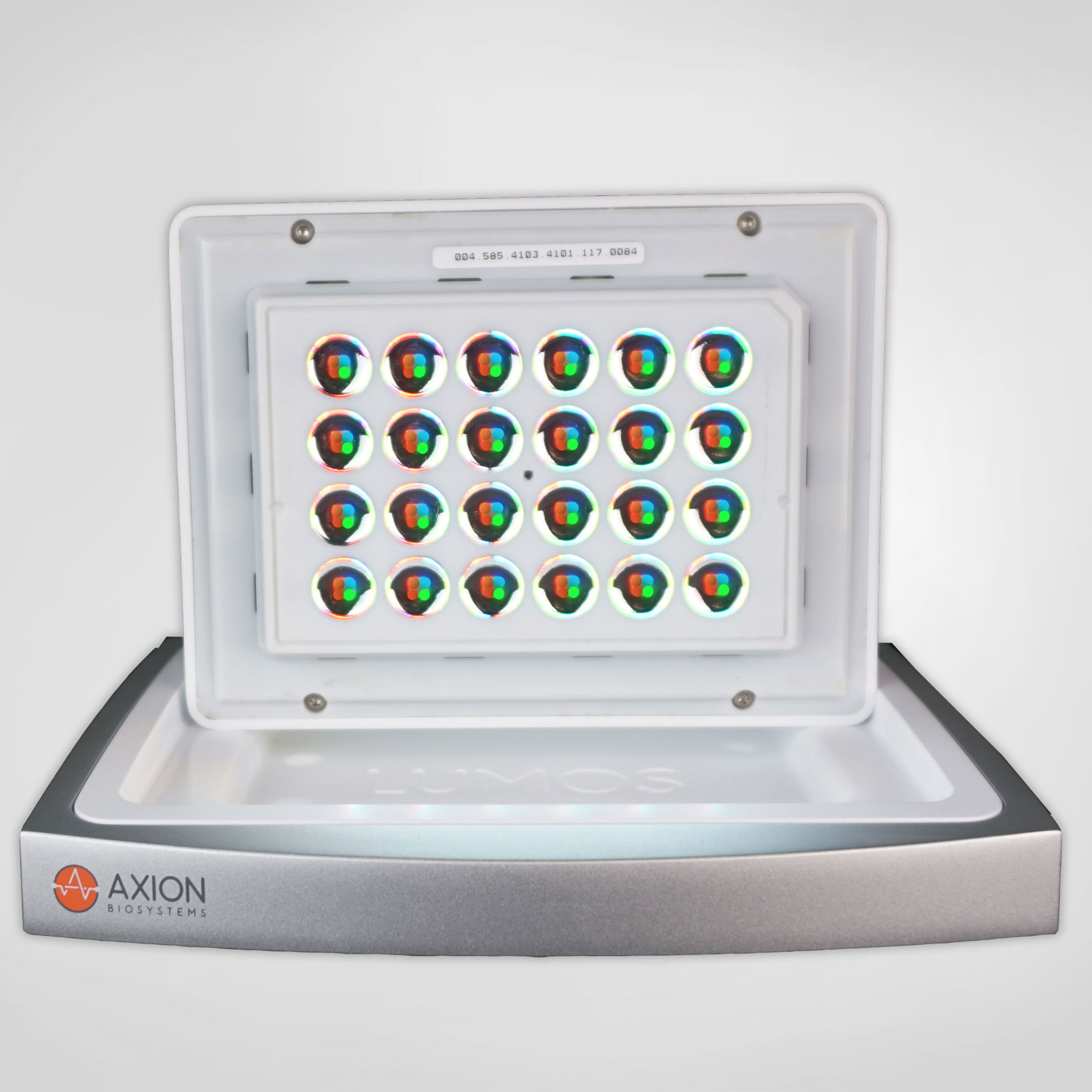


Maestro Edge allows for non-invasive evaluation of your cells in an easy-to-use in vitro assay. Whether monitoring the intricate, electrical activity of excitable cells (e.g. neurons and cardiomyocytes), or tracking the growth and death of cancer cells, Maestro Edge allows you to investigate the functionality of your cells in a multiwell plate.
Key Features
-
Measure cellular activity label-free and real-time - The Maestro Edge detects key parameters of neural network activity, cardiac functionality, and cell growth, death and attachment.
-
Precisely control the cells environment - Cells are a product of their environment. Maestro Edge has a smart environmental chamber that finely controls temperature and CO₂ while rejecting electrical noise and mechanical vibrations.
-
Connect to your network - 384 simultaneous live recordings from your cells with the Neural and Cardiac modules. Now you can understand life’s circuitry label free in real time in 6- or 24-well plates.
-
Continuous cell monitoring - 96 simultaneous live recordings from your cells with the Impedance module. Track cell proliferation, morphology, and viability in real time.
-
See your cells - Sometimes you just want to look at your cells under a microscope. Maestro’s CytoView patented transparent circuit technology allows cell visualization and assay multiplexing.
-
Control cellular activity - Recreate specific patterns of cellular activity using electrical stimulation or light pluses (with the Lumos optical stimulation system).
-
Start your assay with the push of a button - “One button setup,” means temperature and CO₂ levels automatically adjust on plate docking. Plate usage is logged via an integrated plate barcode scanner for convenient experiment tracking.
-
Monitor the kinetics of your biology on your smartphone - No need to be in lab. With the Impedance module, track changes in cell proliferation, viability, and cell killing over minutes or weeks.
Overview
The Maestro Edge multiwell MEA and Impedance system allows you to capture the complex biology of your cells. Whether monitoring the kinetics of cellular growth and death or recording the activity of excitable cells; the Maestro Edge can help you record it noninvasively, in real time, and with software tools to make analysis quick and painless.
Customize your Maestro Edge system for your assay needs:

Software
The Maestro Edge platform is available with six software modules: Neural, Cardiac, MEA Viability, MEA Automation, Impedance, and GxP Impedance. Select the software modules to match your assay needs:
Neural – Measure the key parameters of neural network function, including activity (are the neurons functional?), synchrony (are the synapses functional?), and oscillation (is the network functional?).
Cardiac – Record the four key measures of functional cardiac performance, label free and in real time in every well of the multiwell plate: action potential (a.k.a. LEAP assay); field potential; propagation; and contractility.
MEA Viability – Measure cell viability and coverage on MEA plates for a complete structure-function assay.
MEA Automation – Automate Cardiac and Neural MEA assays with this API for interfacing with liquid handling platforms.
Impedance – Track cell proliferation, morphology, and viability label-free and in real-time. Ideal for immuno-oncology, cytotoxicity, virology, cell migration, cell proliferation, GPCR assays, and many more.
GxP Impedance – Achieve FDA 21 CFR Part 11 compliance in GMP/GLP labs with this version of the Impedance Software Module.

Neural Metrics Definitions
The need for powerful neural analysis software does not have to mean complicated software. Download the Neural Metrics document to discover over 50 neural metrics available to you for your data analysis.
Consumables
The Maestro Edge system is compatible with the 24- and 6-well versions of Axion’s MEA plates, and the 96-well impedance assay plate. Select the multiwell plates to match your assay needs:
CytoView MEA – The premium Maestro multiwell MEA plate with a transparent well bottom for cell visualization and assay multiplexing. The 24-, and 6-well plate formats are compatible with the Maestro Edge.
BioCircuit MEA – Maestro MEA plates with an opaque well bottom delivering high-quality results at the lowest cost per well. The 24-well plate format is compatible with the Maestro Edge.
Lumos MEA – Maestro MEA plates designed for use with the Lumos system, featuring a transparent well bottom and light-focusing lid. The 24-well plate format is compatible with the Maestro Edge.
CytoView-Z – The Maestro impedance plate with a transparent well bottom for cell visualization and assay multiplexing. Available in a 96-well plate format.
Peripherals
Lumos is a multiwell light stimulation system for optogenetic assays, that pairs with the Maestro Edge. The Maestro Edge platform is compatible with the Lumos 24 optical stimulation system:
Lumos 24 – For use with Lumos MEA 24 plates. The Lumos 24 system has four LEDs per well (red, orange, green and blue).

Related Applications
Consumables
The Maestro Edge system is compatible with the 24- and 6-well versions of Axion’s MEA plates, and the 96-well impedance assay plate. Select the multiwell plates to match your assay needs:
CytoView MEA – The premium Maestro multiwell MEA plate with a transparent well bottom for cell visualization and assay multiplexing. The 24-, and 6-well plate formats are compatible with the Maestro Edge.
BioCircuit MEA – Maestro MEA plates with an opaque well bottom delivering high-quality results at the lowest cost per well. The 24-well plate format is compatible with the Maestro Edge.
Lumos MEA – Maestro MEA plates designed for use with the Lumos system, featuring a transparent well bottom and light-focusing lid. The 24-well plate format is compatible with the Maestro Edge.
CytoView-Z – The Maestro impedance plate with a transparent well bottom for cell visualization and assay multiplexing. Available in a 96-well plate format.
Peripherals
Lumos is a multiwell light stimulation system for optogenetic assays, that pairs with the Maestro Edge. The Maestro Edge platform is compatible with the Lumos 24 optical stimulation system:
Lumos 24 – For use with Lumos MEA 24 plates. The Lumos 24 system has four LEDs per well (red, orange, green and blue).
 Forgalmazott termékeink gyártói - keressen gyártó szerint a logóra kattintva
Forgalmazott termékeink gyártói - keressen gyártó szerint a logóra kattintva







